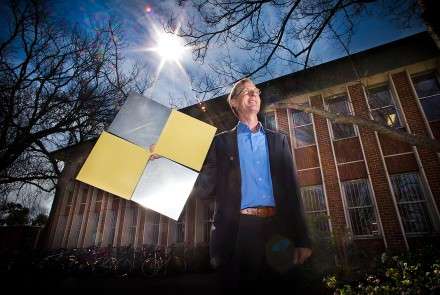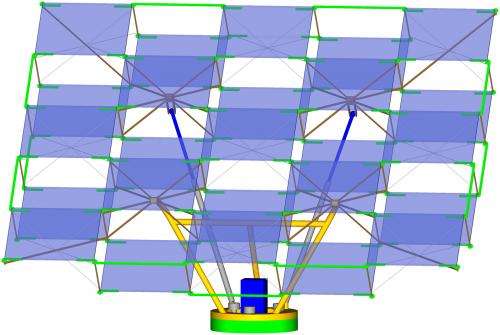Solar student has 3-D vision

A three-dimensional chessboard-like structure that may soon harness the sun to create power for your toaster, television, or the city you live in.
3D solar panels has been a concept College of Engineering and Computer Science PhD student Ross Edgar has been working on for the past three years.
The 3D solar structure is like nothing seen before, made of overlapping layers of non-overlapping panels (think chessboards on top of one another, with solar panels in the black squares of the upper board, and panels in the white squares of the lower board), also known as a double-layer orthogonal-offset panel, or DLOOP.
"The economic advantage of DLOOP technology is estimated at nine per cent, based on mechanical, thermal, land use and duty cycle gains," Mr Edgar said.
"This model can be built cheaper and lighter because strong winds exert 20 per cent less force on DLOOP arrangements of photovoltaic panel."
With the assistance of the National Computational Infrastructure's supercomputer Mr Edgar has been able to calculate and understand the limitations of high-wind conditions on the DLOOP model.
He analysed nine to 81 square DLOOP models using computation software, and performed wind tunnel tests on scale models for some of these.
"I am now reasonably confident of optimisation options for high wind conditions and constraints," Mr Edgar said.
"Now in my third year of research I hope to move onto thermal issues, using computation software for analysis of low to no wind conditions.

"It is expected up to eight per cent more energy will be produced by DLOOP photovoltaics at midday in summer because hot air is replaced by fresh via the vents."
Mr Edgar's hope is to produce a commercial DLOOP model, that delivers, as a minimum household requirement, 15-30KW hours of electricity per day.
"The DLOOP technology requires a tracking system and that means developing a purpose built product from the bottom up. Sitting panels on rooves is OK but for many, the capital cost, aspect or shading of this option will always be a barrier," he said.
"In any case, it is unlikely that town planners will allow roof top solar tracking systems to become ubiquitous. So another way is needed.
"One possibility is to establish sites just outside urban areas where customers can lease an appropriate area with services to connect their tracking system to the grid.
Provided by Australian National University




















